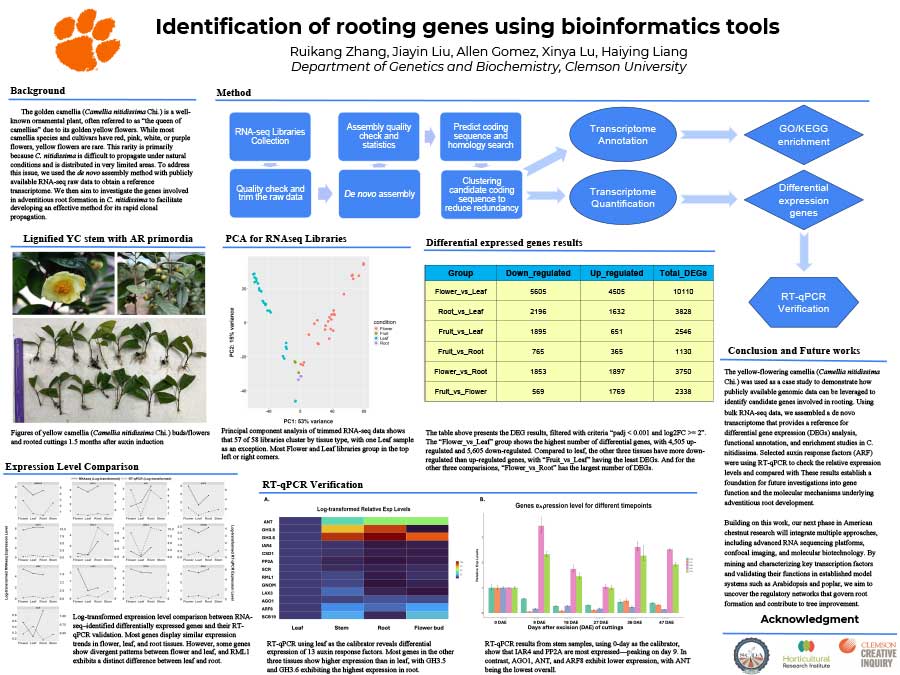2025 Poster Session
Zhang, R; Lu, X; Liu, J; Liang, H. 2025
Click image to view PDF.
Abstract
Identification of rooting genes using bioinformatics tools
Zhang, R1; Lu, X1; Liu, J1; Liang, H1. 2025
1Clemson University, 105 Collings Street, Biosystems Research Complex, Clemson, SC
Adventitious roots (ARs) are plant roots that form from tissues other than roots via an organogenic process. While AR formation can be part of a plant’s normal development— such as crown roots in cereals and nodal roots in strawberries—it can be induced under stress conditions, such as flooding, nutrient deprivation, and wounding. Leveraging this rooting capability after wounding (excision), clonal propagation by cutting has become the most commonly used method for fixing and maintaining desired genotypes in many woody species, due to its ease of operation and low skill requirement.
At the molecular and cellular levels, adventitious root formation is a complex developmental process that is usually initiated from vascular cambium-derived cells. Cells in the vascular cambium are meristematic, characterized by their small and flattened cells with thin walls, forming a ring in the cross section. Normally, the vascular cambium is responsible for the secondary growth, differentiating into the secondary phloem on the outside of the stem and into the secondary xylem toward the center. As secondary phloem and xylem tissue accumulate, they increase the girth of the stem and contribute to wood and bark. Therefore, to form adventitious root primordia, these cells must go through a fate-change phase and the expression of rooting genes must be regulated.
In this poster, I will use a yellow-flowering camellia (C. nitidissima) as an example to demonstrate how to leverage publicly available genomic data for the identification of rooting genes. Our results lay the foundation for future studies of gene function and molecular mechanisms of adventitious root development.

